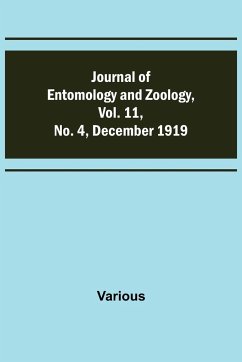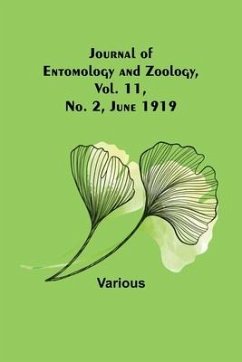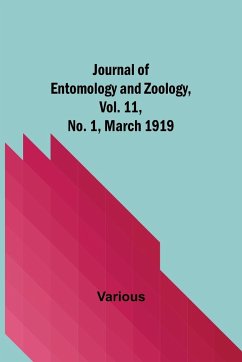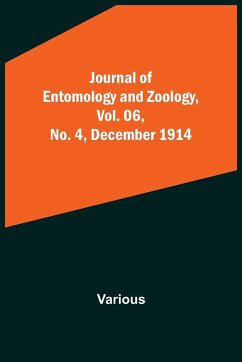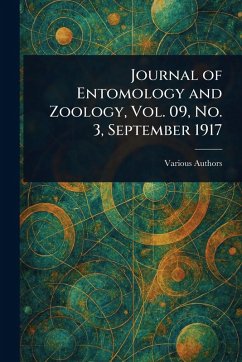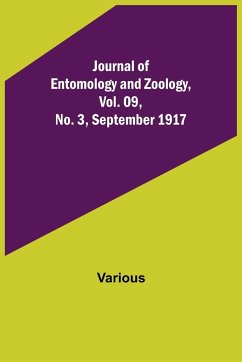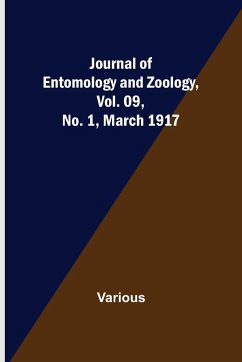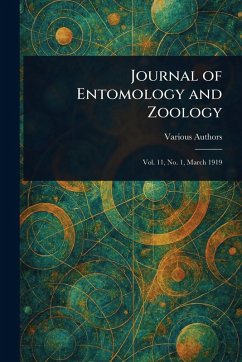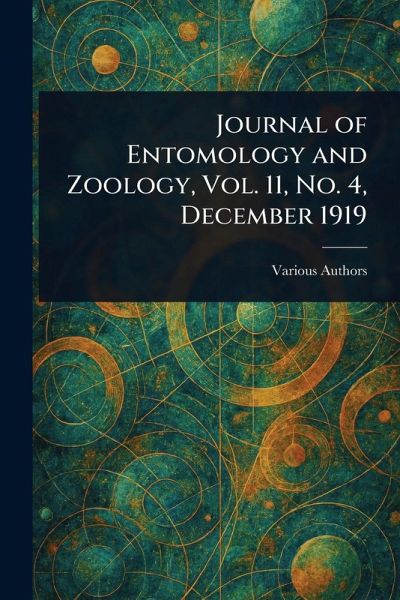
Journal of Entomology and Zoology, Vol. 11, No. 4, December 1919
Versandkostenfrei!
Versandfertig in über 4 Wochen
16,99 €
inkl. MwSt.

PAYBACK Punkte
8 °P sammeln!
Delve into the fascinating world of early 20th-century zoology and entomology with this meticulously prepared print republication of "Journal of Entomology and Zoology, Volume 11, Number 4, December 1919." Authored by Horace Gunthorp, Charles P. Alexander, and W. A. Hilton, this historical scientific journal offers a captivating glimpse into the animal and insect life of California. Explore detailed observations and studies presented within its pages, a testament to the dedication of these pioneering scientists. This volume provides invaluable insights into the zoological landscape of Californ...
Delve into the fascinating world of early 20th-century zoology and entomology with this meticulously prepared print republication of "Journal of Entomology and Zoology, Volume 11, Number 4, December 1919." Authored by Horace Gunthorp, Charles P. Alexander, and W. A. Hilton, this historical scientific journal offers a captivating glimpse into the animal and insect life of California. Explore detailed observations and studies presented within its pages, a testament to the dedication of these pioneering scientists. This volume provides invaluable insights into the zoological landscape of California during this period. It remains a valuable resource for anyone interested in the history of science, the study of insects, or the diverse animal populations of the Golden State. This historical record offers a unique window into the scientific practices and discoveries of its time, perfect for researchers, students, and enthusiasts alike. This work has been selected by scholars as being culturally important, and is part of the knowledge base of civilization as we know it. This work is in the public domain in the United States of America, and possibly other nations. Within the United States, you may freely copy and distribute this work, as no entity (individual or corporate) has a copyright on the body of the work. Scholars believe, and we concur, that this work is important enough to be preserved, reproduced, and made generally available to the public. We appreciate your support of the preservation process, and thank you for being an important part of keeping this knowledge alive and relevant.





